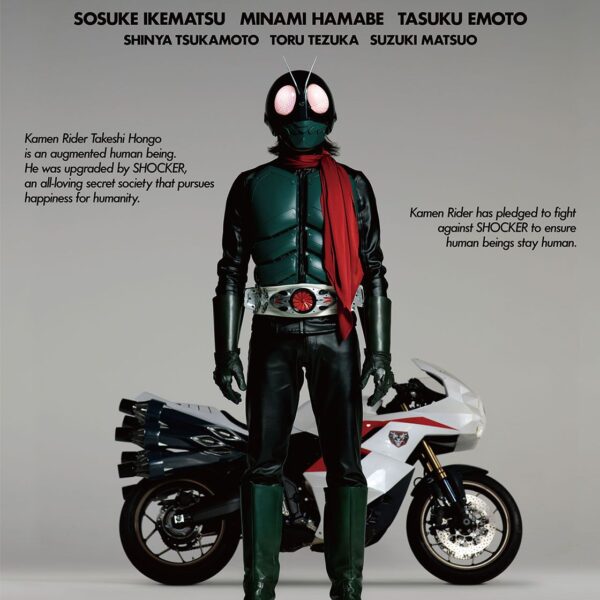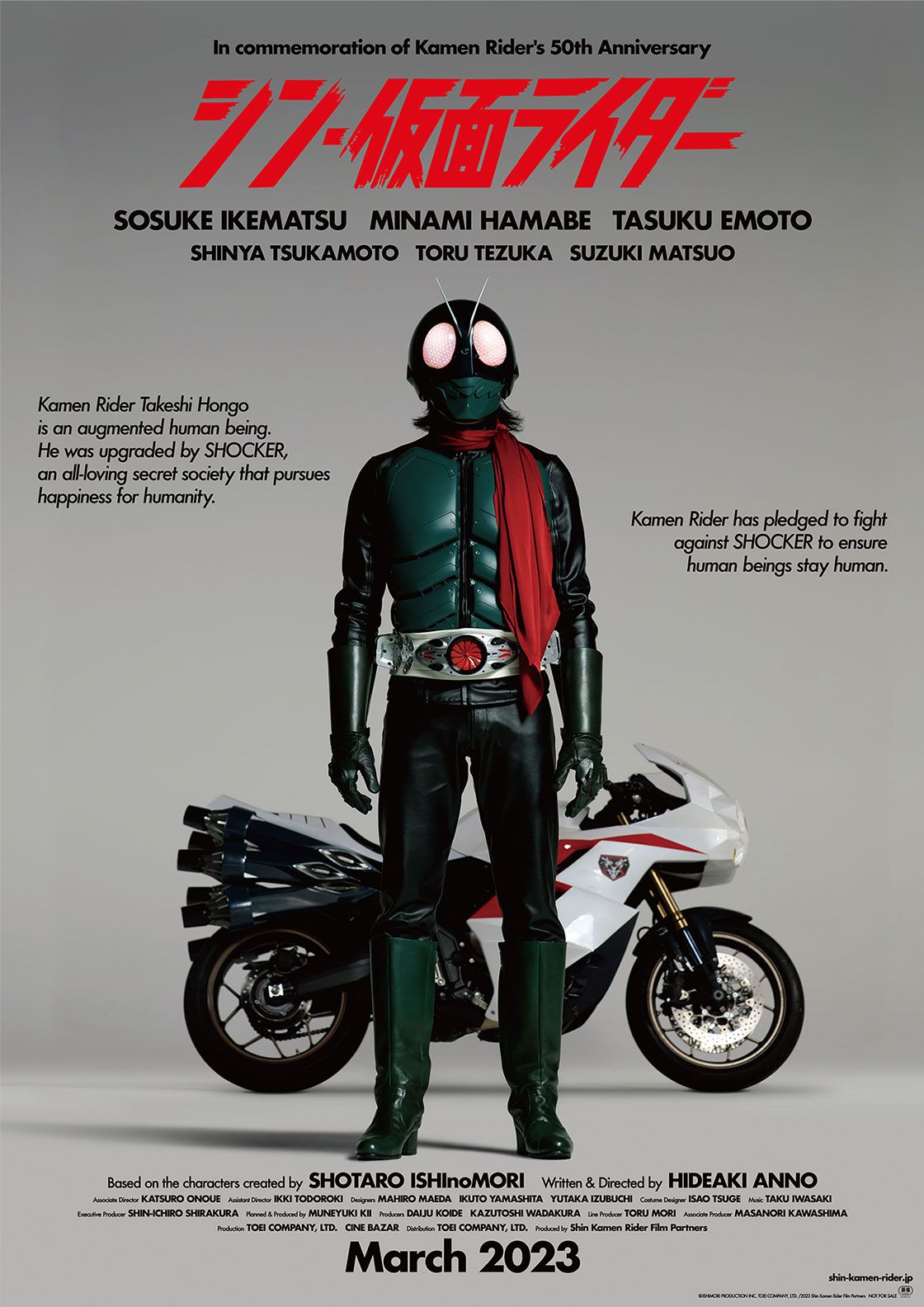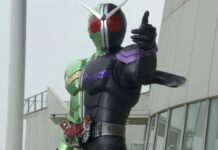Without getting into too many spoilers, Shin Kamen Rider ends the way it begins: with our titular Rider on his motorcycle.
In fact, it ends with Kamen Rider riding off into the sunset- the kind of picture-perfect ending to a movie you would imagine the series to already have done in its many iterations. (Though to my knowledge, it’s the first movie in the franchise to have done so.)
It’s worth mentioning how this movie is part of celebrating 50 years of Kamen Rider. Each and every part of it does make you feel so. It is as much of an attempt to create a modern reimagining of the original 1971 series of the same name, as much as it is a painstaking endeavour to faithfully recreate the elements of the original series with today’s visual effects technology. With all the trends of reboots and adaptations that aim to elevate the source material by making drastic changes, Shin Kamen Rider tells audiences that Kamen Rider is fine just the way it is.
Not long into the film, the familiar intro of the theme song “Let’s Go! Rider Kick” blasts into full force as a rendition by composer Taku Iwasaki plays to an incredibly striking action sequence stylistically reminiscent of director Hideaki Anno’s past live-action work Cutie Honey (2004). It all culminates in a climax where our hero performs his signature “Rider Kick” finishing move, a series mainstay, but one that feels like it has been realized in its highest form befitting a motion picture production of this caliber. Shin Kamen Rider presents “Rider” as it truly is, and what it truly is, is brilliant.
Needless to say, to state that Shin Kamen Rider is a love letter to the series feels like a massive understatement. More so, every part of Shin Kamen Rider feels like it was made with the express purpose of showing the beauty of “Kamen Rider” to both fans and general audiences alike. For example, Kamen Rider fights in the forests, dams, small towns, and industrial landscapes of rural Japan, and while it’s partly because much of the original show takes part in those locales, the movie never fails to capture the beauty of these sparse landscapes possess. And it’s not just from the original: Shin Kamen Rider takes its cues from all eras of Rider, be it creator Shotaro Ishinomori’s original manga, to series from the Showa, Heisei, or Reiwa eras, all to create something that is as close to capturing the essence of “Rider” as one could ever get. In that respect, it succeeds quite well.

But most importantly, and perhaps what makes it count as one of the greats among other superhero movies in my book, is the sheer amount of pathos it has. Shin Kamen Rider’s Hongo Takeshi, played by Sosuke Ikematsu, puts his emotions on full display to the point of being constantly trembling, as if on the verge of tears. He’s a character haunted by his tragic past, yet it’s that past which also motivates him to keep fighting. And yet he also realizes that the heavy burden of fighting means he may not be able to avoid taking another life. None of it is ever taken lightly by the movie, and the somber tone of our protagonist’s heroism lends an air of gravitas to the film as a whole.
Shocker, the organization acting as the antagonist of the movie, purports to bring people “happiness” through twisted means, reminiscent of malicious cults that offer easy ways out of life’s miseries. But Kamen Rider stands in opposition to that, as a symbol of how people can have the strength to overcome their grief and suffering to hopefully gain the chance of attaining happiness that is true. More than anything, this is perhaps what made “Kamen Rider” so compelling 50 years ago and is still true even now: Kamen Rider is a hero who understands sorrow and pain, which is precisely why he fights to free others from it.
Shin Kamen Rider premiered in Japanese theatres on 18 March 2023.
The Indonesian Anime Times | Review by Caesar E.S








